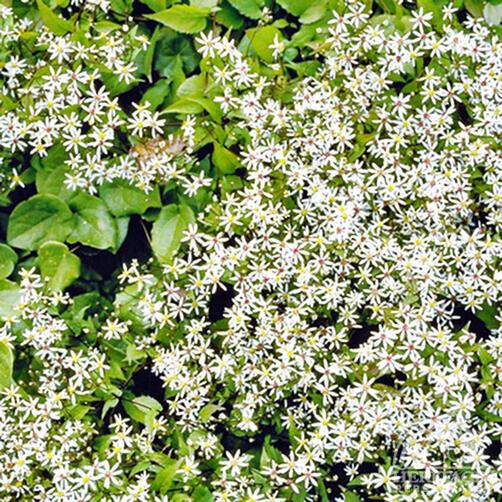Aster divaricatus
Plant number: 1.085.840Unlike most other species of Fall Aster, this one is suitable for shady sites. A North American native wildflower, this grows well under shrubs and at the edge of woodland gardens. It forms a low mound of crispy-looking bright green leaves, bearing upright stems of small white, red-eyed daisies, held on black stems. Also tolerates sunny locations, and will naturalize well in the woodland or meadow garden. Although not yet widely grown, this species deserves much wider use in North American gardens. Further details for |
Aster divaricatus
Plant number: 1.085.840Unlike most other species of Fall Aster, this one is suitable for shady sites. A North American native wildflower, this grows well under shrubs and at the edge of woodland gardens. It forms a low mound of crispy-looking bright green leaves, bearing upright stems of small white, red-eyed daisies, held on black stems. Also tolerates sunny locations, and will naturalize well in the woodland or meadow garden. Although not yet widely grown, this species deserves much wider use in North American gardens. Further details for |






